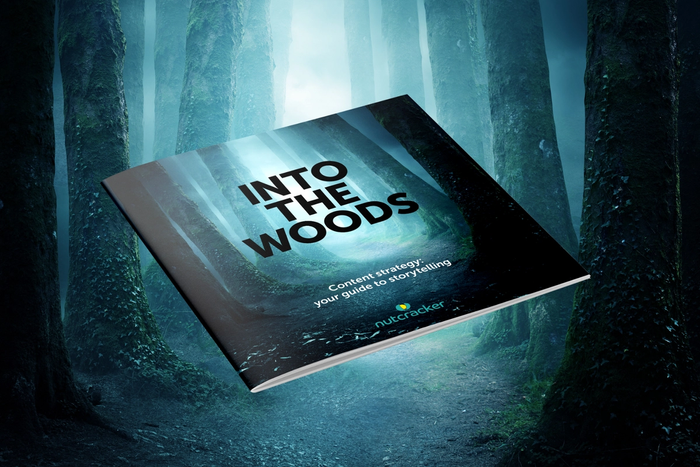Content Marketing & SEO
The B2B Guide to Thought Leadership Content – Strategy & Benefits
There are more ways to lose a sale than there are to win it — more reasons not to buy than to do business. That’s especially true in B2B sales because of three factors:
· Deal sizes are often big
· Making the wrong buying decision can be catastrophic
· Several people are involved in the decision
Knowing that, when you’re trying to sell B2B there’s one thing you can’t afford to be without — trust. Without trust, nobody will spend budget, they won’t risk embarrassing themselves or hurting their business, and it’ll be impossible to win over one buyer, let alone a team of them.
That’s what thought leadership is for. It’s not a vanity project for business leaders, it’s an essential tool to reassure prospects that if they buy from you, it’ll be money well spent. According to LinkedIn and Edelman’s B2B Thought Leadership Impact Study, 64% of B2B buyers trust thought leadership more than marketing materials or product sheets when they’re deciding on a vendor or partner.
Here’s our guide to the ‘why’ and the ‘how’ of thought leadership content.
Why be a thought leader?
Long-term strategy
Only 5% of B2B prospects are actively in the market to buy, according to Marketing Week. That means 95% of the market either don’t know that they have a problem, or aren’t yet thinking about ways to solve it.
A good thought leadership strategy means that you establish yourself with that 95%. Your content could make them aware of the problems they didn’t know they had, or, when they do decide to look for help, they will remember your expertise and be all the more likely to come to you.
Steering the customer journey
Thought leadership is a powerful awareness tool, but it’s so much more. For the 5% of B2B prospects who are looking to buy, thought leadership doesn’t just grab their attention, it plays a fundamental role at every stage of the decision process. That’s partly because the B2B customer journey is an absolute mess, and it’s fraught with risk for the buyer.
Imagine the customer journey crosses a river on stepping stones. Marketers stand on one bank, shouting about how exciting things are on the other side. Salespeople stand on the opposite bank, calling reassuringly to buyers that it’s worth jumping to the next stone, even though the gaps are getting bigger.
We want to believe that buyers always jump forwards from one stepping stone to the next, and a lot of sales and marketing training material assumes that they do.
In reality, buyers don’t make linear progress from awareness, to research, to consideration, to conversion, to loyalty, to advocacy. They move forward one step, move back two, perhaps heading all the way back to the start, to reassure themselves that they really do want to cross the river. They could even jump off the stepping stones, into the flowing river, and perhaps reappear later, either to jump back onto the stepping stones, or to ignore the stones completely and swim across to the other side.
Prospects will research and justify their choices to themselves and others throughout the decision. They need reassurance however far they are into their customer journey. Thought leadership provides that reassurance.
On top of that, because several people have a say in the buying decision, you’re not trying to get one person to the other side of the proverbial river, but a whole team, each of whom has different reasons for making the trip, and some of whom want to do it more than others. Whatever reasons any individual has for buying, they won’t do it if they don’t trust you.
How to be a thought leader
According to the LinkedIn and Edelman study, 66% of decision-makers think the pandemic hugely increased the amount of thought leadership in the marketplace. At the same time, it revealed that 71% of decision-makers think that less than half the thought leadership they consume contains valuable insights.
Put simply, there’s more ‘thought leadership’ around than ever, and most of it is a waste of time.
However, the same study revealed that 65% of buyers had a better impression of a company because of a piece of thought leadership. So, bad thought leadership is more common than ever, but the good stuff still stands out and works.
What is ‘good’ thought leadership?
There are three elements that make thought leadership ‘good’:
· Expertise
· Character
· Revelations
Expertise is fairly self-explanatory — you have to know more than most people on the topic you’re writing or speaking about. If most people know everything you could tell them, you’re not an expert.
Character is intangible, but enormously valuable. It not only keeps people engaged, but also helps to connect with people on an emotional level. A buyer’s enjoyment of the way you express your ideas translates to the affinity and trust that you need to cultivate.
Revelations serve a similar purpose. When you get a reaction like ‘I never knew that!’ or ‘I hadn’t thought about it that way!’, you stick in the minds of your audience and delight them with your content. The very best thought leaders take something their audience thought they knew, and cleverly explain why it’s not true, so that the audience enjoys the surprising perspective.
The reality of thought leadership
The truth about thought leadership is that it can take a long time to come to fruition, so you may not see an instant ROI. In fact, not only can it take time to see the results, but they also can be difficult to measure. That’s something that nobody likes to hear about a marketing initiative.
You might feel tempted to stop investing time or money in thought leadership, because it’s uncomfortable to spend those resources and not see an immediate return, but it’s important to stick with it. The results may be slow, but they’re there playing a role you may not even be aware of with converting new business or securing warm leads.
The process of thought leadership
For your thought leadership to be effective, you need a process. Consistency is fundamental — it reinforces your position as a trusted and reliable expert, your website will perform better in Google searches, and the algorithms of platforms like LinkedIn will display your content more widely.
The best thing you can do to help you stay consistent is to create a content plan. Map out a schedule of topics, titles, and the media that you want to use for each, then stick to it.
Make sure you’re looking out for opportunities to react as well. When a news story hits that overlaps with your area of expertise, it would be a shame to waste the opportunity. Your loyal audience will expect you to comment, and it’s also a very powerful way to ride the wave of a breaking story and get yourself or your brand noticed.
Creating and publishing your content is only part of your process. After that, you need to assess the results — how many people saw it, who shared it, who commented on it — and start to build a picture of what performs well and why that might be.
Of course, you’re running a business, so you don’t have the luxury of time to craft a schedule, create incredible content every week, and then analyse its performance, neither may your marketing team. That’s where outsourcing your content can help.
Nutcracker can create your schedule, write and promote your content, and bring your brand to life, keeping front of mind your purpose and commercial goals behind everything we create. Personality is vital to successful thought leadership, and we inject your authentic character into your content, raising awareness of your brand, and building your profile among the businesses that you want to target. Best of all, we make them think about you and take note of what you are saying.
To find out we can build your brand, your profile, and your reputation as a thought leader, email hello@nutcrackeragency.com or call 0203 941 0305.
Share this:





